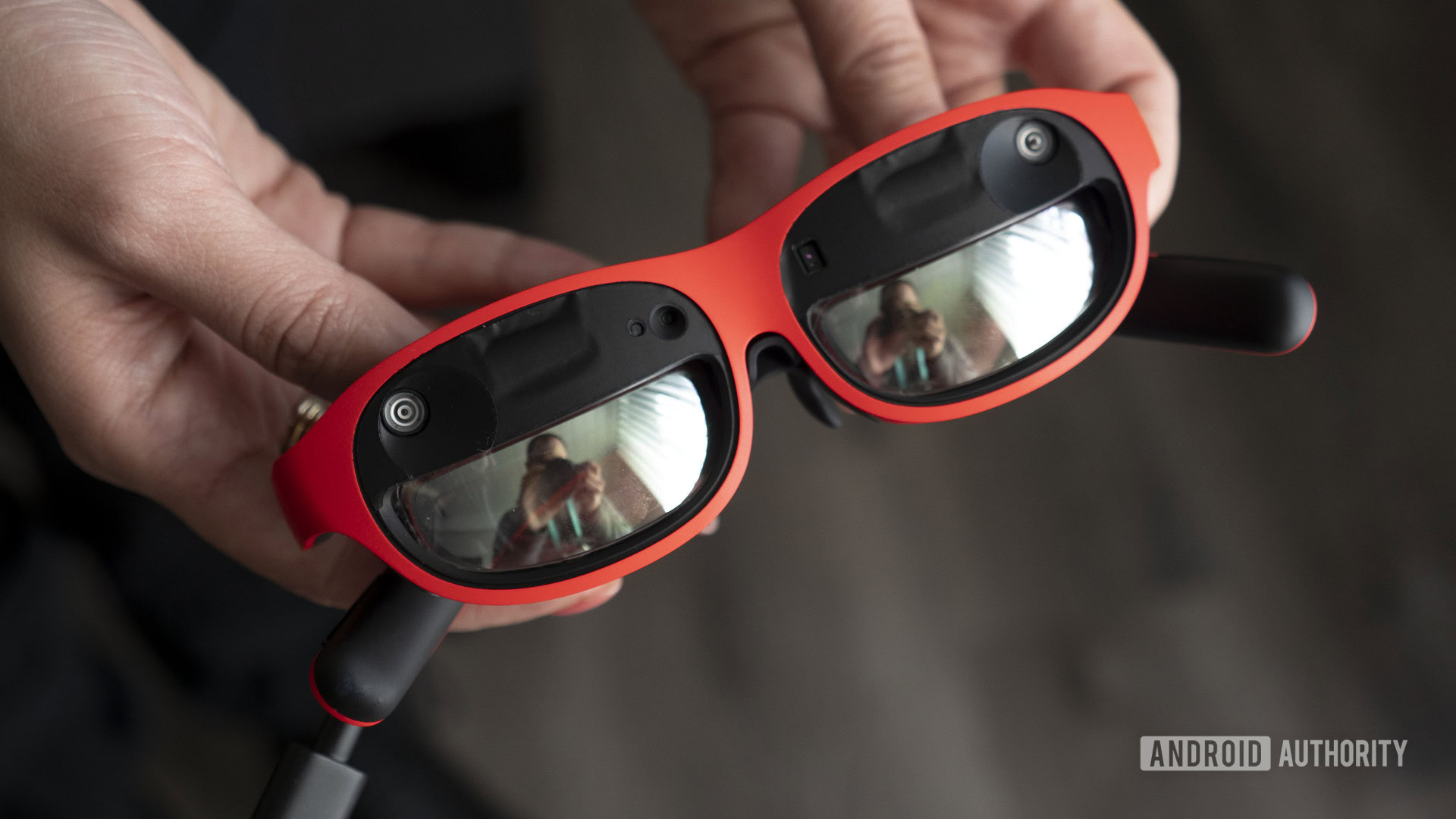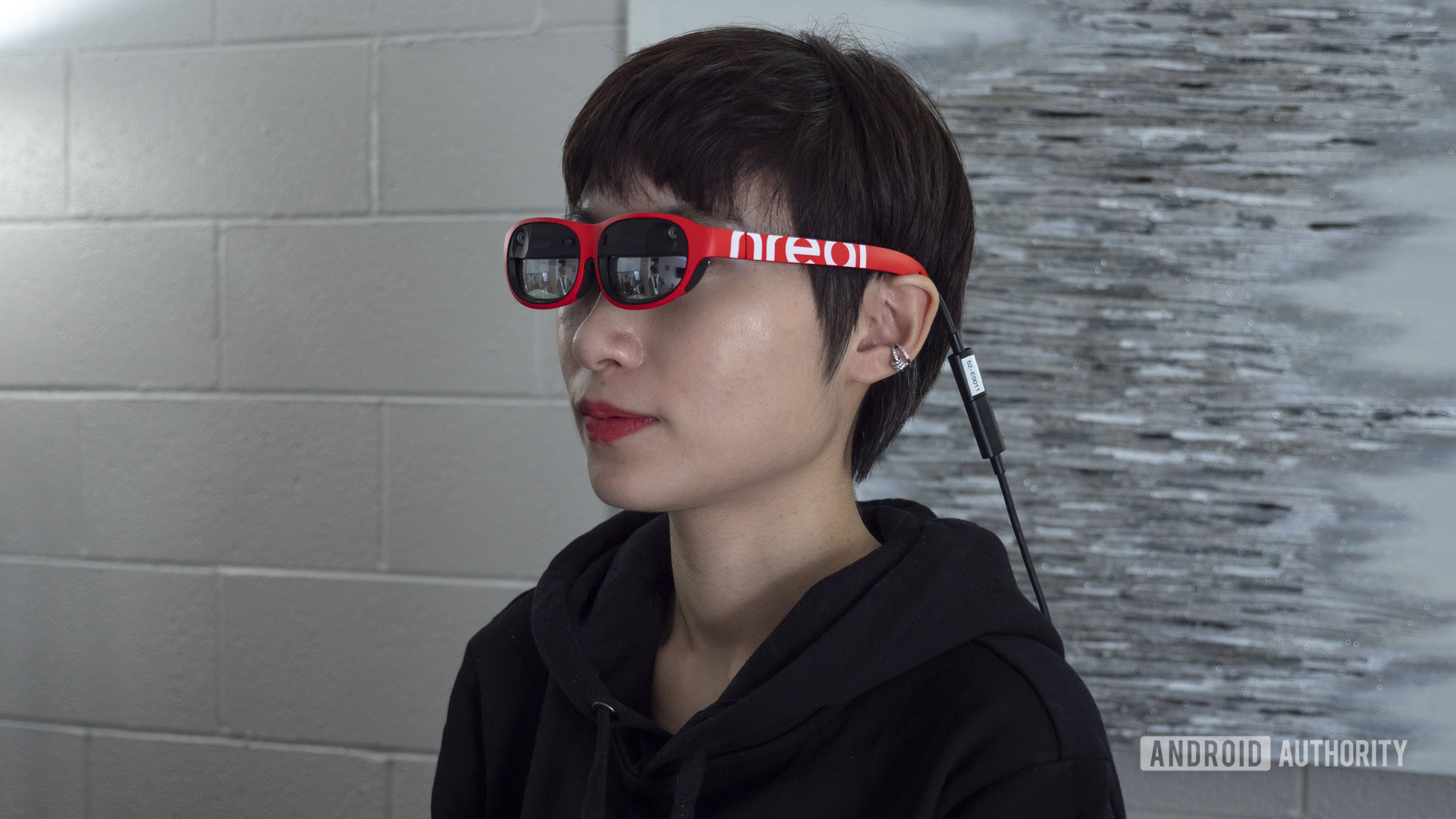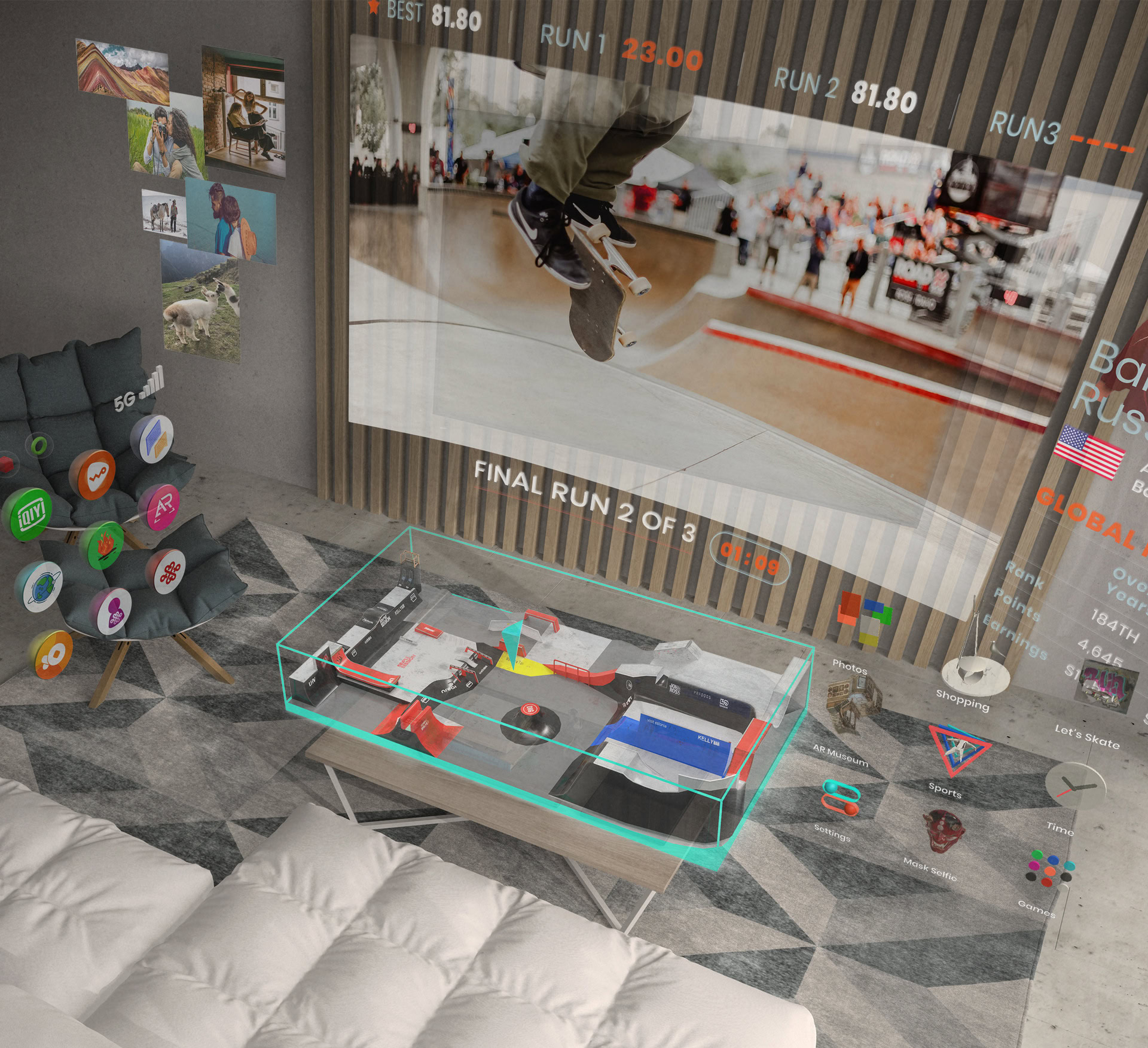Affiliate links on Android Authority may earn us a commission. Learn more.
I tried Nreal's mixed reality glasses at CES and now I want a pair

If you told me one of my favorite announcements from CES was going to be a pair of mixed reality glasses, I would’ve called you crazy. Maybe I’m the crazy one because I spent some time with Nreal’s upcoming Light mixed reality glasses and I’m very much on board.
Nreal first announced the Light glasses at CES 2019 but didn’t plan to ship them to consumers until 2020. They’re supposed to arrive soon, but we don’t have anything other than an “early 2020” estimate from the company.
The Nreal Light glasses offer a mixed reality (MR) experience — far better than a heads-up display but not entirely immersive. They fit on your face just like normal glasses, though they’re obviously chunkier. However, they’re not as bulky as, say, an HTC Vive Cosmos or Oculus Go or Quest, so you should be able to wear them considerably longer without getting tired of them. They weigh just 88 grams (about 3 ounces).

During our demo at CES, Nreal touted the usefulness of Light for media and gaming. Admittedly, I was skeptical going into the demo; why would someone want to put on a bulky pair of glasses just to watch YouTube? After using them, I can see why you’d want to. You can pull up virtual screens — multiple virtual screens if you’d like — and resize them and move them around as you so choose. For instance, I could watch YouTube on one end of my living room and surf through another website on the other end of the room.
The picture quality is surprisingly good. I’ve heard from other people that the Nreal Light provides a higher-quality picture than the Magic Leap 1. That’s especially impressive considering the Magic Leap 1 isn’t nearly as affordable or as sleek as the Light. The Nreal Light supports a wide 52-degree field-of-view at 1080p, so increasing the size of the YouTube video in front of you doesn’t make things look blurry.

Speaking of blurry, I wear glasses (like a nerd) and I had to take mine off for the demo. With each order of the Light glasses, you’ll get a small pair of frames that you can use to get fitted for a pair of prescription lenses. It’s not the most elegant thing — going into your glasses provider just to get lenses for your MR glasses — but I can’t think of a better solution without making the glasses larger to fit over people’s existing glasses.
The Nreal Light connects to any Snapdragon 855-powered smartphone with a USB-C cable. We used a Black Shark 2 to power the glasses during our demo and everything performed well. Since the bulk of the experience is enabled by the smartphone, all Android apps (yes, all) work with the platform.
Support for all Android apps is the Nreal Light's killer feature.
Nreal’s 3D Nebula system enables all Android apps to be compatible with the Nreal Light glasses. They show up in 2D, but you can move them around in your mixed reality view in front of you and combine them with 3D applications that are built into the Nreal system.
If you happen to have a friend with a pair of Light glasses, you can both load up the same MR environment and see the same things. If you wanted to show a friend a YouTube video, for instance, you could both put on your glasses and watch the same thing at the same time.
I also played a zombie game during my demo. This is what really sold me. You have a hoard of zombies crawling near you, and the goal is to throw objects at them until they’re all defeated. It’s fun, especially seeing them in your real physical surroundings. Check out a little snippet of the game below:
The Nreal Light glasses aren’t perfect, or at least they weren’t in my demo. There were some tracking issues. I was walked through an immersive shopping experience where I could see virtual models wearing designer clothes on the table in front of me, and I could select them with my phone and put them anywhere in the room to take a closer look. The demo had a few issues keeping the virtual screen in place and my pointer disappeared at one point, meaning we had to start the demo over. Not a great experience when that happens, but it wasn’t bad.
For my money, I’d probably invest in the Nreal Light over something like the Oculus Quest. I know, I know, they’re for entirely different markets. The Oculus headset is for gamers, the Nreal Light is more for content consumption. Personally, I have a tough time with motion sickness when using VR headsets. I recently played Vader Immortal on the Oculus Quest (thanks, Adam!) and it took me a long time to get used to moving around. I never really got the hang of it in the end, and I think the sick, woozy feeling was too much for me. Since you’re still planted in the real world with the Nreal Light, it’s a much less jarring experience.
Nreal is selling a Light Developer Kit on its website right now for $1,199. For regular folks who want to get their hands (face?) on a retail unit, you’ll need to wait until they go on sale in early 2020 for $499. Alternatively, LG U+ customers in Korea and KDDI customers in Japan can visit their local retail stores to check out the Nreal Light for themselves. If you’re in one of those areas, I’d really suggest you do so — these glasses are a lot of fun.
Okay, I know mixed reality glasses aren’t going to appeal to everyone, but I think $499 is a pretty good price for what you get here. What do you think? Interested in the Nreal Light? Sound off in the comments below.